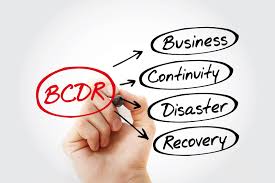Business continuity and disaster recovery are no longer on the sidelines in IT plans. They have become central to how organisations protect themselves. Every business today leans on digital systems, and when those systems falter, the impact is immediate. A payment fails, a hospital record system goes dark, a production line stalls. Money is lost in the moment, but the harder cost is trust that takes months to rebuild.
Outages are not rare anymore. They are part of the digital environment. A cyberattack can sweep through networks in minutes. A storm can bring down a grid for hours. Even a routine patch can trigger a chain of failures no one saw coming. Stability cannot be assumed; disaster recovery has to be planned for.
That shift has moved continuity out of the server room and into the boardroom. The question is no longer “will systems fail?” but “how quickly can we bring them back when they do?”
When Downtime Turns Costly
Downtime has two layers of cost. The first is visible: lost revenue, unhappy customers, stalled operations. The second is slower but often worse: penalties for non-compliance, erosion of trust, and long-term damage to client relationships.
Many firms still rely on in-house disaster recovery solutions. The trouble is, those environments are expensive, rarely tested under stress, and often fail to scale when needed most. By the time disaster strikes, weaknesses are revealed.
A bank missing a few minutes of UPI availability faces questions from regulators. A hospital that loses access to digital records puts patients at risk. A manufacturer with its ERP offline watches production lines grind to a halt. These moments show why business continuity and disaster recovery is not just an IT exercise.
This is where disaster recovery colocation provides a different path. Instead of patching together resilience internally, organisations can use infrastructure already built for reliability, colocation facilities run daily by specialists. In practice, that means less firefighting when things break and more assurance that recovery will work as planned. It is what keeps businesses trusted and running when everything else is under pressure.
How Colocation Benefits Disaster Recovery
Colocation is often thought of as rented racks and power. In the context of business continuity and disaster recovery, the value of disaster recovery colocation runs deeper:
- Room to expand – A sudden acquisition or seasonal surge can overwhelm in-house systems. A colocation data centre gives enterprises the ability to tap into capacity that is already built, without the wait or cost of a new build.
- Geographic diversity – In certain sectors like finance and banking, regulators already encourage workloads to be split across multiple sites. Distributing operations across colocation campuses reduces the risk of a single event bringing everything down and helps meet compliance at the same time.
- Stronger infrastructure – Tier III or higher facilities with redundant carriers, power, and cooling are the baseline in colocation. Replicating that internally would cost millions and distract from the core business. Sharing that scale with other tenants makes it practical.
- Virtualised recovery – Recovery is measured in minutes now, not days. Virtualisation and colocation DR sites built for DRaaS make it possible to bring workloads online quickly, meeting customer and SLA expectations even in a crisis.
- Cloud blend – Many enterprises now run DRaaS via colocation, keeping mission-critical systems on stable hardware while using the cloud for elasticity. This hybrid model is gaining traction.
Some businesses lean on geographic diversity, others on cloud integration. The mix varies, what matters is that colocation gives recovery plans a tested anchor.
How Colocation Fits Modern Continuity Planning
Yesterday’s continuity measures weren’t wrong, but they’re no longer enough. Copying backups onto tapes or leaving a spare server in an office cupboard might once have been enough. In today’s always-on world, with real-time payments and data-driven decisions, tolerance for downtime is close to zero.
By shifting workloads into a colo data centre, organisations can test continuity strategies properly, not just on paper. Failover becomes smoother because the environment has already been engineered for it. Instead of hoping a plan works, firms can prove it works.
That blend of physical resilience and digital flexibility is why colocation is often described as a bridge. It brings together hardened infrastructure with the ability to connect into cloud and virtual systems. The result is continuity that feels designed, not bolted on.
Continuity as a Core Expectation
Across industries, disaster recovery is moving from optional add-on to central feature of colocation. Providers are becoming continuity partners, not just landlords.
Among them, STT GDC India is widely recognised as a leader. The company helps enterprises embed disaster recovery colocation into their strategies, with access to interconnected ecosystems and facilities built for resilience. By supporting real-world testing, STT GDC India turns continuity from theory into practice.
This shift reflects how continuity itself has evolved. It is no longer about storing backups or waiting for an idle server to boot. It is about making sure entire operations recover quickly and keep pace with customer expectations.
Every system fails eventually. It might be a cyberattack, a regional outage, or a storm that takes out local infrastructure. The real measure is how quickly organisations bounce back.
That is where disaster recovery colocation proves its worth. By anchoring plans in facilities designed for resilience, businesses reduce uncertainty and gain confidence that recovery will be consistent.
Few places make the shift clearer than STT GDC India. Colocation is not just racks and floor space; it is a foundation for continuity. And in a business environment where disruption is constant, that foundation is increasingly essential.
Recovery does not need to be improvised. With colocation, it can be predictable, tested, and dependable, qualities every enterprise need when the unexpected happens.
